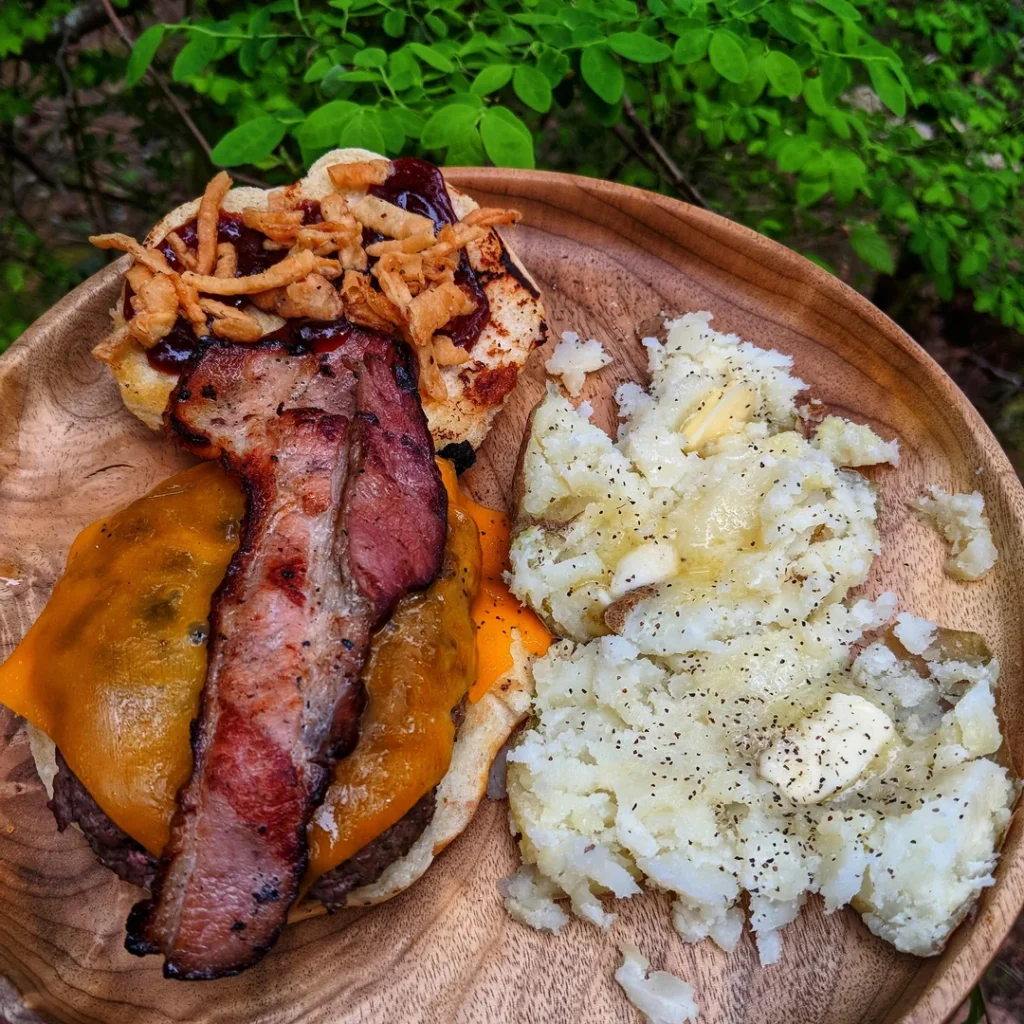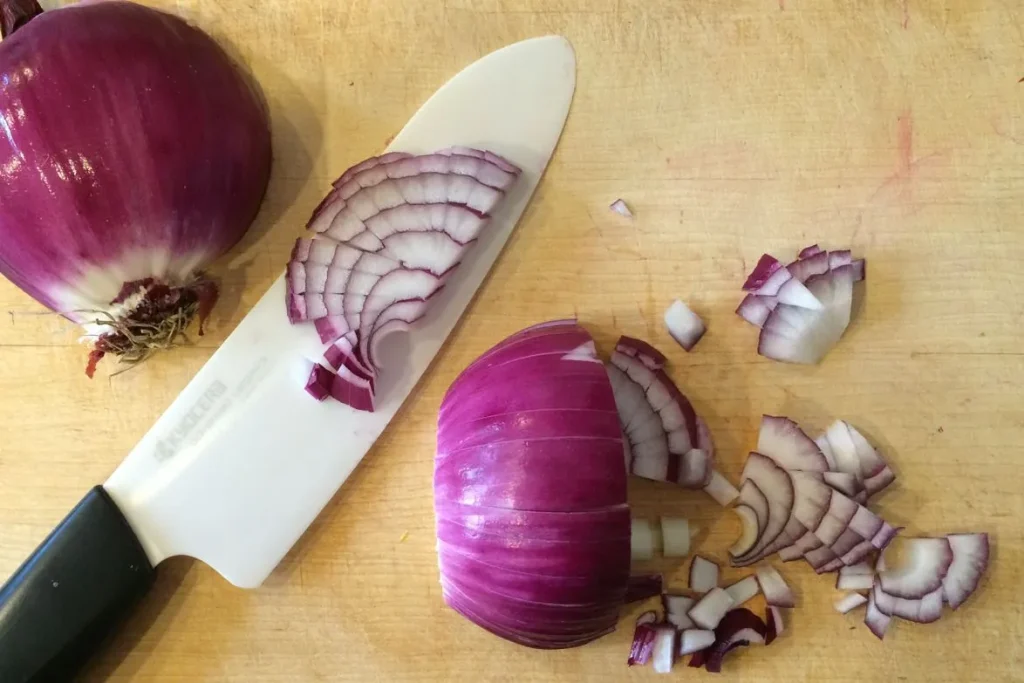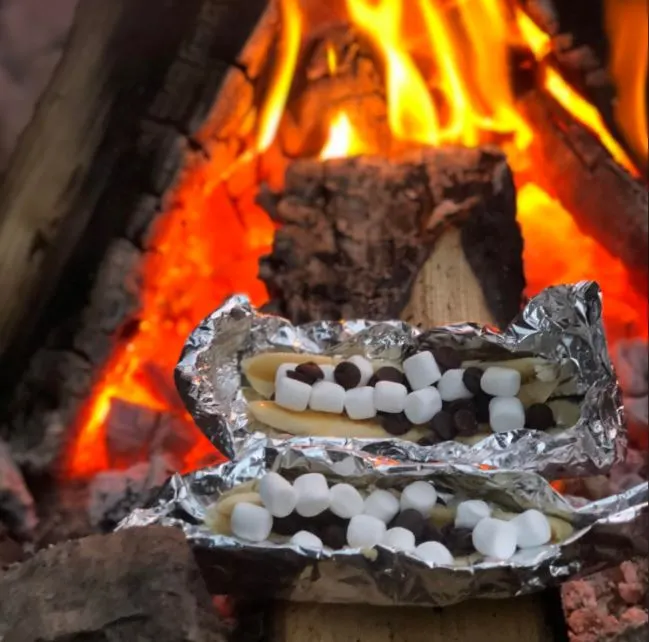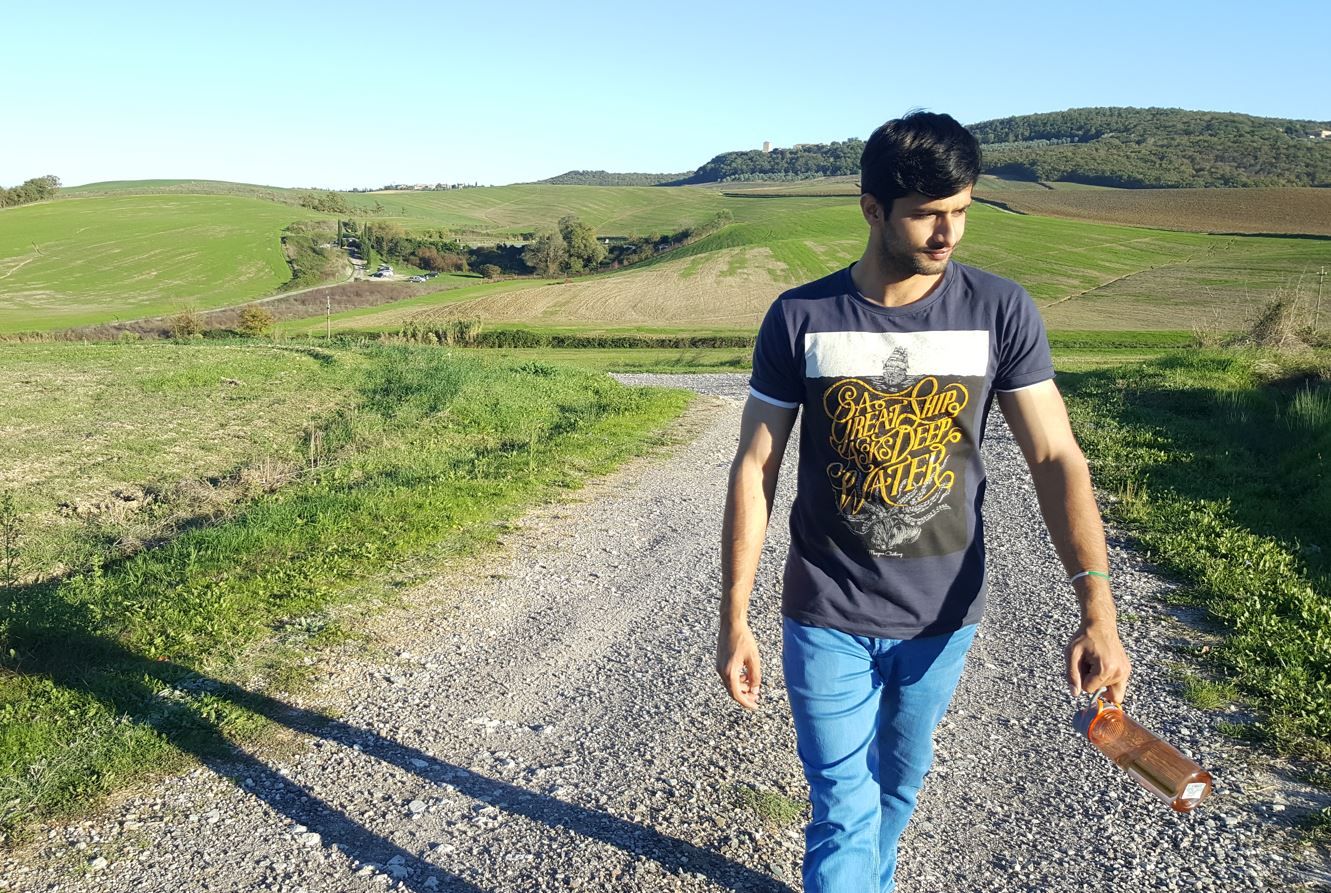Campfire cooking is more than just a way to prepare food; it’s a chance to enjoy the outdoors while making delicious meals with the right tools and techniques. In this guide, you’ll learn how to use essential gear like cast-iron cookware, Dutch ovens, and grill grates to cook over an open flame. We’ll cover meal planning, safety tips, and cooking methods to ensure a successful experience.
From breakfast burritos and foil packet dinners to campfire desserts, this guide provides practical advice on how to cook, clean, and stay safe around the campfire. Whether you’re a beginner or a seasoned camper, you’ll discover easy-to-follow recipes, important fire safety guidelines, and the best ways to enjoy campfire cooking.
Essential Campfire Cooking Gear
1: Must-Have Cooking Tools

Cooking over a campfire requires specific tools designed to withstand high temperatures and open flames. Here’s a deeper dive into essential campfire cooking gear:
- Cast-Iron Cookware: Cast-iron skillets and Dutch ovens are incredibly durable and perfect for campfire cooking. These heavy-duty items distribute heat evenly, which is essential for cooking over an open flame where temperatures can vary. A well-seasoned cast-iron skillet can be used to fry, sear, and even bake. The Dutch oven is ideal for slow-cooking stews, soups, and casseroles, making it a versatile piece of gear for long trips.
- Grill Grates: A portable grill grate allows you to cook directly over the fire. They are lightweight and easy to set up, making them ideal for grilling meats, vegetables, or even toasting bread. Grill grates also provide a stable platform to place your pots and pans, which is essential when dealing with uneven campfire surfaces.
- Dutch Oven: The Dutch oven is the star of campfire cookware. It’s made for slow cooking over coals and is perfect for making one-pot meals like chili, baked beans, or even desserts like cobblers. You can control the heat by adjusting the number of coals under and on top of the pot.
- Portable Tables and Utensils: While you may not think of a portable table as essential, it’s helpful to have a stable place for meal prep. Campfire cooking also requires sturdy utensils, such as long-handled tongs, spatulas, and knives. Make sure your utensils are heat-resistant to avoid accidents while cooking.
- Portable Stove: You leave your portable camping stove behind if you are planning to hit outdoors. A high-quality portable camping stove allows you to prepare meals or boil liquid anytime.
2: Safety Equipment

Safety should always be a priority when cooking over an open flame. Here’s a list of important safety gear:
- Fire Extinguishing Tools: Always have a method to quickly extinguish your fire if needed. A bucket of water, a container of sand, or a fire extinguisher is essential. Never leave your campfire unattended, and ensure the fire is completely out when you’re done cooking or leaving the campsite.
- First-Aid Kit: Minor burns or cuts can happen while cooking outdoors. A well-stocked first-aid kit should include burn ointment, bandages, and disinfectant wipes. Be prepared for any mishaps, especially when working with sharp knives or hot cookware.
Preparing for Campfire Cooking
Step 1: Meal Planning

Planning your meals ahead of time is essential for successful campfire cooking. Here are some detailed tips to get you started:
- Select Easy-to-Cook Meals: Meals that require minimal preparation and cook quickly are ideal for campfire cooking. One-pot meals, foil packet dinners, and pre-prepped ingredients will save you time. Consider meals like campfire chili, breakfast burritos, and skewers. Check out our just-add-water meals for camping article if you don’t have enough time for cooking.
- Dietary Restrictions: If you’re camping with a group, take into account any dietary restrictions. Make sure you have vegetarian, gluten-free, or dairy-free options to accommodate everyone. This could mean packing alternatives like gluten-free tortillas or plant-based protein sources.
Step 2: Pre-Camping Food Prep

Doing some prep work before you head to the campsite will make cooking much easier.
- Chop Ingredients at Home: Pre-chop vegetables, slice meats, and marinate your proteins at home. Store everything in reusable bags or containers to keep them fresh. This cuts down on the time spent chopping at the campsite and reduces the chance of cross-contamination.
- Packing and Storing Food: Use a high-quality cooler to store perishable items. Layer your food with ice packs to maintain the cold temperature. Consider separating meals into individual containers so you can grab what you need for each day without rummaging through everything. Read how to prepare vacuum-sealed meals for camping.
Cooking Methods Over a Campfire
Method 1: Direct Cooking Techniques

Cooking directly over the flames can be simple and effective. Here are a few methods you can try:
- Skewers and Roasting Sticks: Skewers and roasting sticks are perfect for cooking hot dogs, sausages, and marshmallows over an open flame. Metal skewers are best as they won’t burn, but wooden skewers can also work if soaked in water beforehand. The key is to rotate the food frequently to avoid burning.
- Caveman Style (Cooking on Coals): Cooking directly on hot coals, also known as the caveman method, is one of the simplest ways to cook food. Wrap potatoes or vegetables in aluminum foil and place them directly on the coals for a smoky, roasted flavor. This method works best for foods that can withstand high heat and don’t require precise cooking temperatures.
Method 2: Using Cookware

While direct cooking is fun, using cookware provides more versatility for your campfire meals. Here’s how to make the most out of your gear:
- Dutch Oven Cooking: A Dutch oven can be placed directly on the coals. You can pile hot coals on the lid to create an oven-like environment. This technique is ideal for cooking stews, casseroles, or baking bread. You can also use it to make desserts like cobblers or cakes by regulating the heat with the coals.
- Grill Grates: Placing a grill grate over the fire allows for more controlled cooking. You can use it for grilling meats and vegetables, or as a surface for placing pots and pans. Adjust the height of the grill grate to control the intensity of the heat—higher for slower cooking, and lower for searing meats.
Recipes for Campfire Cooking
Recipe #1: Breakfast Ideas

- Breakfast Burritos: Prepare scrambled eggs, cooked sausage or bacon, and shredded cheese ahead of time. Warm tortillas over the fire, add the pre-cooked ingredients and wrap it all up for a tasty, portable breakfast.
- Potato Hash: Dice potatoes, onions, and bell peppers, then cook them in a cast-iron skillet over the fire. Add eggs and let them cook on top of the hash for a hearty start to the day.
Recipe #2: Lunch and Dinner Options

- Campfire Chili: Use a Dutch oven to simmer ground beef, beans, tomatoes, onions, and spices. Let it cook over low heat for about 1-2 hours, stirring occasionally. This warm, hearty meal is perfect for chilly nights by the fire.
- Foil Packet Meals: Create individual foil packets by filling them with diced chicken, vegetables, olive oil, and seasoning. Seal them tightly and place them on the coals. They cook in about 20-30 minutes, and the best part is there’s no pot to clean afterward.
Recipe #3: Desserts Over the Fire

- S’mores Variations: Go beyond the traditional s’more by adding peanut butter cups, flavored marshmallows, or chocolate-covered pretzels for a fun twist.
- Campfire Banana Boats: Slice open a banana lengthwise, stuff it with chocolate chips and marshmallows, wrap it in foil, and place it on the coals. Let it cook for about 5-10 minutes, and you’ll have a delicious, gooey dessert.
Safety Tips for Campfire Cooking
Fire Safety Guidelines
- Choose a Safe Location: Always use a designated fire pit or fire ring to contain the fire. Clear away any flammable materials like dry leaves or twigs from the area surrounding the fire.
- Manage Fire Size and Heat: Keep your fire manageable. A large fire can be difficult to cook over and pose a safety risk. Build a small-to-medium fire, and adjust its size as needed while cooking.
Food Safety Practices
- Separate Raw and Cooked Foods: Always use separate cutting boards and utensils for raw and cooked food to avoid cross-contamination. This is especially important when handling raw meats like chicken or beef.
- Proper Food Storage: Keep perishables in a cooler with plenty of ice. Store food in sealed containers to prevent animals from getting into your supplies.
Cleaning Up After Cooking
- Cleaning Cookware: Once you’re done cooking, let your cast-iron cookware cool down before cleaning. Use a soft cloth or brush to wipe it clean. Avoid using soap, as it can remove the seasoning from the cast iron. Dry the cookware thoroughly to prevent rust.
- Proper Disposal of Waste: Pack out all trash and food scraps. Never leave food behind, as it can attract wildlife. Make sure your fire is completely out before you leave the campsite by dousing it with water and stirring the ashes.
Conclusion
Campfire cooking is not just about nourishment—it’s about enjoying the process and connecting with nature. With the right tools, thoughtful preparation, and a little creativity, you can cook a wide variety of meals that go beyond traditional camping fare. From hearty breakfasts to satisfying dinners and delightful desserts, the possibilities are endless. So, gather your gear, try out some new recipes, and enjoy the many benefits of cooking over a campfire.
Editor’s Recommendation:

Hi, I’m Masab Jamal, the founder and head editor of this blog. I love to spend most of my time in the wilderness. Apart from camping and outdoor life, I’m a full time blogger.

